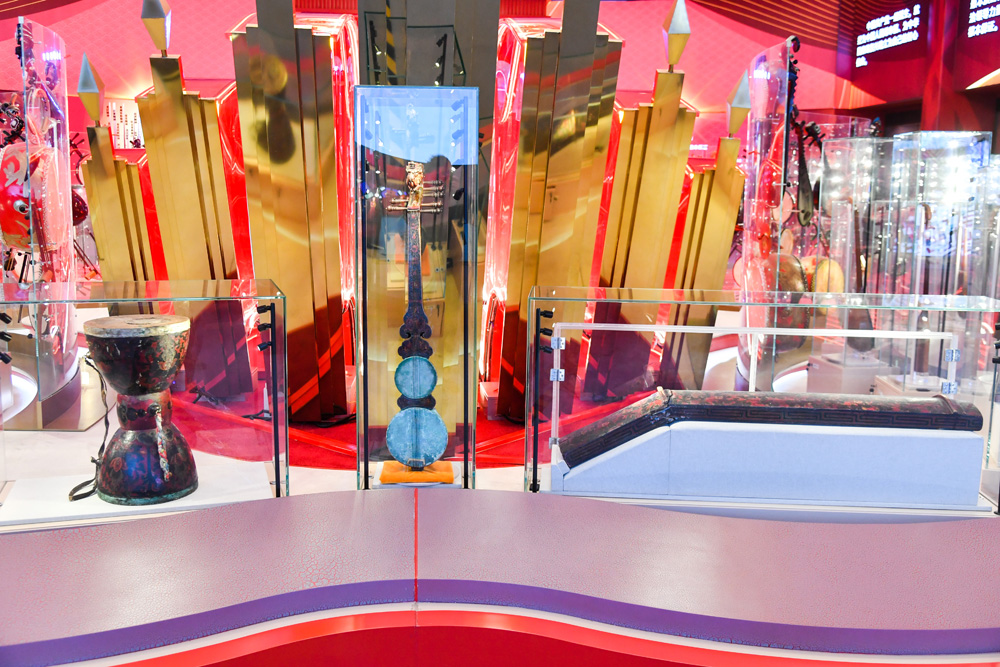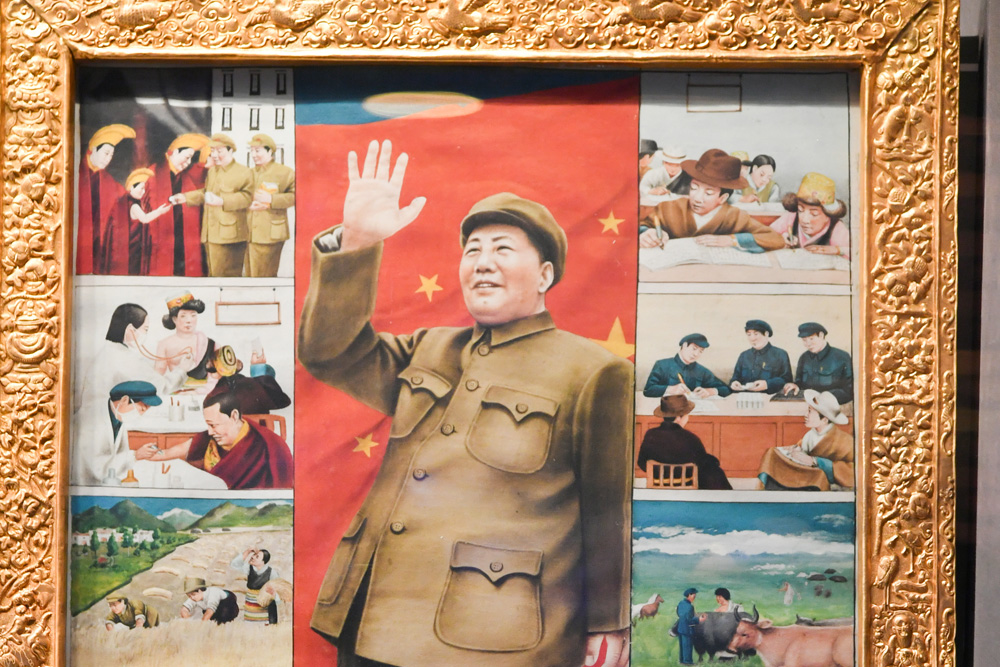Artifacts on display at a museum in Beijing shed light on exchanges between Xizang Autonomous Region and the Central Government throughout history.
Among the most notable objects are the musical instruments taken by Princess Wencheng and Princess Jincheng to Xizang. The two Tang Dynasty (618-907) princesses were wedded to the leaders of Xizang, then a kingdom, establishing rapport between the Tang court and the regional authorities.
In the Yuan Dynasty (1279-1368), Xizang became a region under the direct jurisdiction of the Central Government. The exhibition featured gifts from Kublai Khan, founder of the Yuan Dynasty, to Phagspa, a Buddhist leader in Xizang and a Yuan imperial preceptor.
Objects that stand out in the exhibition's contemporary China section are gifts from the current Dalai Lama to Chairman Mao Zedong. The former presented Mao with a golden dharma wheel as well as a traditional Tibetan thangka painting when he attended the First Session of the First National People's Congress, China's top legislature, as a deputy in 1954. Despite his show of loyalty to the Central Government, the Dalai Lama secretly engaged in separatist activities, according to a 2015 government white paper on Xizang's path of development. He and his supporters instigated an armed rebellion in 1959.
After the rebellion was put down with the Dalai Lama fleeing abroad, democratic reform unfolded. Xizang's governance structure transitioned from a feudal system to a modern democracy. This transformation freed people from social class constraints, allowing them to elect their political representatives and voice their opinions.
(Photos by Wei Yao)






















